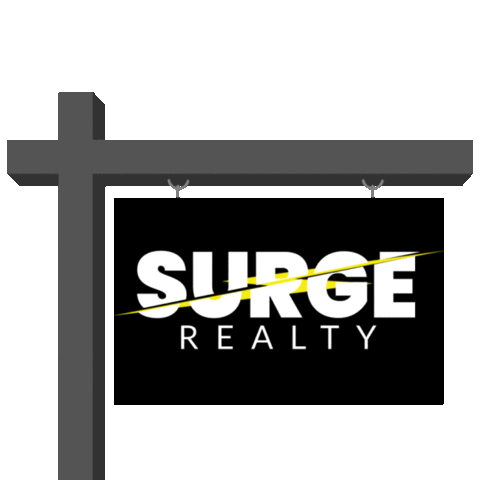From Credit Comeback to Keys in Hand: How to Boost Your Score, Save Smart, and Start Investing in Real Estate
- Adriana Perez

- May 31
- 7 min read
Updated: Sep 8
If you are ready to make a change, you should really read this one. Take notes.

But First: ⚠️ Disclaimer (Because Grown-Up Stuff Matters)
I’m not a financial advisor, CPA, mortgage broker, or credit counselor. Everything shared in this blog is based on my personal experience, research, and lessons learned while helping families prepare for homeownership and investment.
Before you take action on any financial decisions, please consult with licensed professionals who can give you guidance based on your specific situation, including:
Financial Advisor – For long-term strategy, investments, retirement, etc.
Credit Counselor – For rebuilding credit or managing debt
Certified Public Accountant (CPA) – For tax planning and filing
Mortgage Broker or Lender – For loan pre-approval and home financing options
Real Estate Attorney – For legal questions around contracts or ownership
Insurance Specialist – To help protect your future investment
If you’re not sure where to start, I’m happy to refer you to people I trust or am actively building collaborations with. This is a team effort, and the right team can change your life.

Let’s be honest — buying a home or investing in property feels like something you do after you’ve “made it.” But the truth is, you build your way there — brick by brick, credit point by credit point, dollar by dollar.
Whether your dream is a cozy family home or a rental portfolio, it starts with understanding how credit works, how saving can grow faster than you think, and how to look good on paper when lenders come calling.
Here’s how to get there — even if you’re starting from scratch.
Step 1: Understand Your Credit Score (and Why It Matters)
Lenders look at your credit score to decide whether to loan you money, how much, and at what interest rate. A higher score = better loan terms = less money wasted over time.
Your score is built from:
Payment history – Did you pay bills on time?
Credit usage – Are you using too much of your credit limit?
Account age – How long have you had credit?
New accounts – Are you applying for too many new things?
Credit mix – A combo of cards, loans, etc.
Step 2: Saving Doesn’t Have to Be Perfect — It Has to Be Consistent
Start small. $5 a week. $20 a paycheck. The goal is momentum, not perfection.
Set up a separate account for your future home or investments. Treat it like a bill.

Step 3: Compound Interest = Your Secret Weapon
Here’s how it works (and why starting early matters):
Let’s say you put $100 a month into a savings account or investment that earns interest.
In a basic savings account (0.5% interest), you earn a few cents a month.
In a high-yield savings or investment account earning 5–10%, the interest earns more interest, that’s compound interest.
THINK ABOUT THIS!
Example: Saving $100 a month for 5 years at 7% interest = over $7,000.That’s $1,000+ more than what you put in.Saving for 10 years? Now you’re over $17,000.
Step 4: Your Debt-to-Income Ratio (DTI) — Front-End vs. Back-End
This is a key number lenders use to see if you can handle a mortgage. It compares how much you owe every month to how much you make.
There are two types:
Front-End DTI: Just your housing costs (mortgage, insurance, taxes) ÷ monthly income.
Lenders prefer this to be under 28%.
Back-End DTI: All debts (housing, car loans, student loans, credit cards) ÷ monthly income.
Try to stay under 43% (the lower, the better).
THINK ABOUT THIS!
Example:You make $5,000/month. If your total debts are $1,500/month, your back-end DTI is 30%. That’s solid.

Step 5: Repairing Credit Takes Balance — And It Doesn’t Have to Delay Your Savings Goals
Improving your credit isn’t about perfecting one thing; it’s about getting several moving parts to work together. Think of it like training for a marathon and building an emergency fund at the same time. You don’t wait until you’re perfect; you start small, stay consistent, and track the wins as they build.
Let’s break it down using this example:
Example Credit Snapshot: (This person is in bad shape)
CURRENT CREDIT SCORE: 598
Payment History: 96% – Almost there, but needs attention
Credit Card Usage: 34% – Decent, but could be lower
Derogatory Marks: 2 – Serious score dampeners
Credit Age: 2 years, 8 months – Still maturing
Total Accounts: 47 – Great variety
Hard Inquiries: 19 – Way too high
Here's the Strategic, Balanced Recovery Plan
1. Fix Payment History — High Impact, Ongoing Priority
Timeframe: 6–12 months minimum of perfect payments to rebuild trust.
What to do:
Automate at least the minimum payments
Ask creditors for goodwill removals on any accidental late payments
Never let another payment slip, even one late mark resets the clock
Save While You Do It: Every time you make an on-time payment, transfer $10–$25 to your savings. It's like rewarding your financial discipline.
2. Lower Credit Usage — Fast Wins Here
Timeframe: 1–3 months if you’re aggressive.
What to do:
Aim to get under 30%, then under 10%
Focus on the highest-utilized cards or the smallest ones you can eliminate fast
Ask for a credit limit increase (but don’t use the new balance)
Save While You Do It: When you pay off a card, keep making the same monthly payment, just redirect it to savings. It keeps your habits strong and builds your down payment fund quietly.
3. Remove Derogatory Marks — The Hardest, but Worth It
Timeframe: 3–6 months to settle or dispute issues, and 12+ months to see major score impact.
What to do:
Contact collections for “pay for delete” deals (in writing!)
Dispute anything inaccurate, especially if older than 2 years
Ask about settlement or hardship programs (they don’t always advertise them)
Save While You Do It: Set aside the amount you’re negotiating slowly, even $50/week. Then, when they agree to settle, you're ready without blowing your budget.
4. Let Your Credit Age — Just Don’t Interfere
Timeframe: Ongoing, but meaningful improvement by the 2–3 year mark.
What to do:
Do not close your oldest credit cards
Avoid opening new ones unless absolutely necessary
Ask a trusted family member if you can become an authorized user on a long-standing account with no late payments
Save While You Wait: This is a great time to open a high-yield savings account or Roth IRA. You’re letting your credit age — let your money grow too.
5. Cool It on Hard Inquiries — Let Them Fall Off
Timeframe: 6–12 months minimum pause; they drop after 2 years
What to do:
Don’t apply for any new credit unless it’s essential
Know that inquiries grouped within 30 days (like car loans or mortgages) are treated as one for score purposes
Save While You Pause: This is your opportunity to go into stealth mode, no flashy new credit cards, just quietly stack cash and prep for your next big move.
Be Consistent, Not Perfect
Trying to fix your score in one weekend is like expecting to build a dream home with just a hammer. But if you chip away at each part while saving consistently, you’ll start to feel the momentum.

Realistic Timeline to Mortgage-Ready Credit
If you start today and stay consistent:
3 months – Lower credit usage, build saving habits, set auto-pay
6 months – Begin to remove derogatory marks, inquiries cool down
9–12 months – Payment history builds strength, score rises
12–18 months – You’re likely ready to qualify for a home loan with smart lender partnerships, even if the score isn’t perfect yet
And Remember:
You don’t need a perfect score. You need:
A clean recent history
A reasonable DTI (see Step 4)
Consistent income
A little saved up for upfront costs
You can absolutely save and repair at the same time; in fact, you should. That’s how you shift from feeling stuck to building real wealth.
Step 6: Set Up Bank Accounts That Work For You, Not Against You
If you want to stay consistent with saving and repairing your credit, you need a system that removes friction and prevents sabotage, even when life gets chaotic.
Here’s how to build that financial system:
1. Open 3 Key Bank Accounts (If You Don’t Have Them Already)
Account | Purpose | Tips |
Main Checking Account | Where your income gets deposited | Use this to pay bills & automate transfers |
Emergency Savings Account | Your safety net | Keep this at a separate bank (harder to “borrow” from) |
Future Home Fund / Opportunity Fund | Down payment, closing costs, or investment capital | Use a high-yield savings like Ally, SoFi, Marcus, Capital One, or Discover |
Pro Tip: Label the savings accounts emotionally, like “My First House” or “Family Freedom Fund.” It keeps you focused on the why behind the work.
2. Automate Everything You Can
Here’s a weekly flow that helps you stay consistent:
Payday Routine (Every 2 Weeks or Monthly)
Income hits your main checking account
Automatically transfer:
10–20% to savings (Home Fund)
Fixed amount to emergency savings
Minimum debt payments auto-drafted
Schedule larger payments (like card payoffs or settlements) for the day after payday

If you get tempted to dip into savings, use a bank with no debit card access (like Ally or Synchrony). It adds just enough friction to stop impulse transfers.
3. Use This Setup to Avoid Overdrafts and Missed Payments
Never pay bills manually unless it’s a lump sum, automate minimums
Use a calendar or app (like Mint, Monarch Money, or YNAB) to track due dates
Set up text/email alerts for low balances or large charges
Set up a small buffer fund ($100–$300) in your checking account to cover mistakes without overdrafting
Bonus: Gamify Your Progress
Every time your score goes up 10 points, add $10 to savings
Every card you bring below 30%, reward yourself (cheaply!)
Every month you don’t touch savings, celebrate with a free or cheap treat

Final Word: Systems Save Dreams
You don’t need willpower, you need structure.
By opening the right accounts, automating your cash flow, and making your money harder to waste, you give yourself room to grow without constant pressure.
This system won’t just help you buy a home. It will help you keep it, protect it, and eventually build something even bigger.
Disclaimer (Because Grown-Up Stuff Matters)
I’m not a financial advisor, CPA, mortgage broker, or credit counselor. Everything shared in this blog is based on my personal experience, research, and lessons learned while helping families prepare for homeownership and investment.
Before you take action on any financial decisions, please consult with licensed professionals who can give you guidance based on your specific situation, including:
✅ Financial Advisor – For long-term strategy, investments, retirement, etc.
✅ Credit Counselor – For rebuilding credit or managing debt
✅ Certified Public Accountant (CPA) – For tax planning and filing
✅ Mortgage Broker or Lender – For loan pre-approval and home financing options
✅ Real Estate Attorney – For legal questions around contracts or ownership
✅ Insurance Specialist – To help protect your future investment
If you’re not sure where to start, I’m happy to refer you to people I trust or am actively building collaborations with. This is a team effort, and the right team can change your life.








Comments